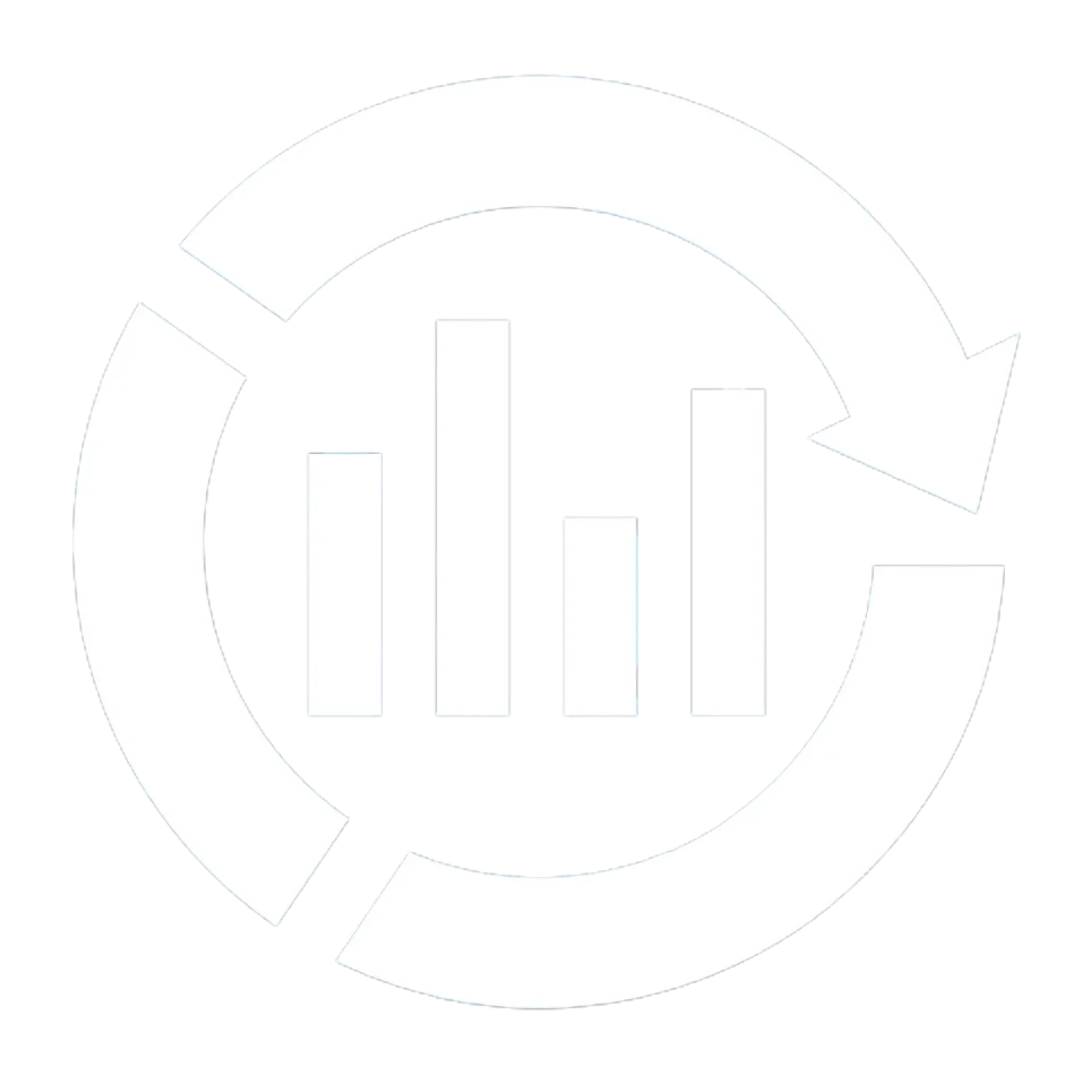Inventory optimization in supply chain analytics: Imagine you’re running a small shop that sells everything from snacks to stationery. If you don’t have enough stock when customers come in, they’ll leave frustrated and might not return. On the other hand, if you have too much stock, especially of things that don’t sell quickly, you’re wasting money.

This balance—between having enough products to meet demand but not so much that you’re wasting money—is what inventory optimization is all about. It helps businesses make sure they have the right products at the right time without going overboard or running out.
What Exactly is Inventory Optimization?
Inventory optimization is about finding the sweet spot between too much and too little stock. The goal is to have enough stock to meet customer demand without holding onto too much, which would cost money in storage and handling.
Think of it like this: if your shop constantly runs out of popular items, people might stop coming. But if you overstock, you’re spending more money to store, manage, and eventually clear out that excess. Companies, especially large ones with massive warehouses, use inventory optimization to ensure they’re not wasting money on unnecessary stock but always have enough for their customers.
Why is Inventory Optimization So Important?
inventory optimization in supply chain analytics isn’t just about saving money—it also keeps businesses running smoothly. Here’s why it matters:
- Reduces Costs: When companies hold too much inventory, they’re paying for storage, insurance, and sometimes even damage or obsolescence (items going out of date). By keeping inventory levels optimized, they can lower these carrying costs.
- Prevents Stockouts: Have you ever gone to buy something, only to find it’s out of stock? That’s what businesses want to avoid. By using inventory optimization, they ensure they have enough stock on hand to meet customer needs, which helps keep customers happy.
- Frees Up Cash: Imagine having piles of money tied up in products that aren’t selling. That’s essentially what happens when businesses overstock. Optimizing inventory allows companies to free up cash that can be used for other things—like launching new products or expanding into new markets.
- Keeps Customers Happy: Inventory optimization ensures that products are available when customers want them, improving customer satisfaction and building loyalty.
How Do Businesses Categorize Their Inventory?
Not all products are the same. Some are super important to a company’s bottom line, while others are less valuable but sell more frequently. To manage this, businesses use inventory classification techniques.
1. ABC Analysis:
ABC analysis is a method of sorting inventory based on its importance:
- A Items: High-value products with lower sales frequency (think expensive electronics).
- B Items: Moderate-value products with moderate sales frequency.
- C Items: Low-value products but high sales frequency (like pens or snacks).
This method helps companies focus more on their A items, since these have the biggest impact on their profits, while managing C items differently.
2. XYZ Analysis:
This method is about demand predictability. It helps companies manage products based on how predictable their demand is:
- X Items: Products with stable, predictable demand.
- Y Items: Products with moderate variability in demand.
- Z Items: Products with highly unpredictable demand.
By combining ABC and XYZ, companies can categorize their products in a way that helps them decide how much to stock and how closely to monitor each item. For example, an AX item (high value, predictable demand) would be managed very differently from a CZ item (low value, unpredictable demand).
Key Inventory Optimization Techniques
Now that we understand how businesses categorize their inventory, let’s look at how they actually manage and optimize it. There are a few tried-and-true techniques that companies rely on to keep their inventory levels just right.
1. Economic Order Quantity (EOQ):
EOQ is a formula that helps businesses figure out how much to order so that they can minimize both their ordering and holding costs. It’s about finding that perfect order size where a company isn’t ordering too frequently or holding onto too much inventory.
Here’s the EOQ formula you can use:
EOQ = sqrt((2 * D * S) / H)
Where:
- D = Demand (units per year)
- S = Ordering cost per order
- H = Holding cost per unit per year
Example: If a company needs 1,000 units of a product annually, the cost of placing an order is $50, and the holding cost is $2 per unit, the EOQ would be:
EOQ = sqrt((2 * 1000 * 50) / 2) = sqrt(50,000) = 224 units
This means the company should order 224 units each time to minimize its costs.
2. Safety Stock Calculation:
Safety stock is the extra inventory you keep on hand to protect against unexpected demand or supply delays. It ensures you don’t run out of stock when things don’t go as planned.
The safety stock formula is:
Safety Stock = Z * σL
Where:
- Z = Z-score corresponding to the desired service level
- σL = Standard deviation of demand during the lead time
Example: If a company wants to achieve a 95% service level (Z = 1.65) and the standard deviation of demand during lead time is 30 units, the safety stock is:
Safety Stock = 1.65 * 30 = 49.5 units
So, the company should hold about 50 extra units in stock to ensure a 95% service level.
3. Reorder Point (ROP):
Reorder point is the inventory level at which you should place a new order to avoid running out of stock. It’s calculated using both lead time demand and safety stock.
Here’s the ROP formula:
ROP = Lead Time Demand + Safety Stock
Example: If it takes 10 days for new stock to arrive and you sell 50 units per day, your lead time demand is 500 units. If your safety stock is 50 units, your reorder point is:
ROP = 500 + 50 = 550 units
This means when your stock drops to 550 units, it’s time to place a new order.
4. Inventory Turnover Ratio:
The inventory turnover ratio tells you how many times your inventory is sold and replaced in a given period. A higher ratio means products are selling quickly, while a lower ratio could indicate slow-moving stock.
Here’s the inventory turnover ratio formula:
Inventory Turnover = Cost of Goods Sold / Average Inventory
Example: If the cost of goods sold is $100,000 and the average inventory is $25,000, the turnover ratio is:
Inventory Turnover = 100,000 / 25,000 = 4
This means the company turns over its inventory 4 times a year.
How Data Analytics Improves Inventory Optimization
Here’s where modern technology comes in. Today, companies use data analytics to make smarter decisions about their inventory. With tools like Power BI, Tableau, and machine learning, they can forecast demand more accurately and adjust their inventory levels in real-time.
1. Real-Time Inventory Tracking:
Using technologies like RFID and IoT sensors, companies can track their inventory levels in real-time. This means they always know exactly how much stock they have, and can make quick decisions about reordering or adjusting stock levels.
2. Predictive Analytics:
Predictive analytics allows companies to anticipate demand based on historical trends, seasonal patterns, and external factors like the economy. With more accurate demand forecasts, businesses can optimize their inventory levels to match what’s actually needed.
3. Data Visualization:
Tools like Power BI allow companies to create dashboards that display important metrics, like stock levels, turnover ratios, and reorder points. This helps them spot trends and make informed decisions quickly.
Challenges in Inventory Optimization
Even with the best techniques and tools, inventory optimization isn’t without its challenges. Some of the common issues include:
- Demand Fluctuations: Markets can be unpredictable. A product that was flying off the shelves last month might suddenly see a drop in demand, leaving companies with excess stock.
- Supplier Issues: If suppliers have inconsistent lead times, it can throw off inventory planning. To manage this, companies might hold more safety stock, but this comes with extra costs.
- Data Accuracy: If the data a company uses isn’t accurate—like incorrect sales numbers or outdated supplier information—then their entire inventory plan could be off.
Conclusion: Why Inventory Optimization Matters in Supply Chain Analytics
Inventory optimization is about more than just cutting costs. It’s about ensuring businesses are agile, responsive, and prepared to meet customer demand without waste. By understanding how to categorize inventory, calculate safety stock, and use tools like data analytics, companies can manage their inventory more effectively.
For anyone getting started in supply chain analytics, learning the principles of inventory optimization is essential. Whether you’re managing a small retail shop or a global supply chain, the ability to optimize inventory levels can significantly impact a company’s bottom line.
Key Takeaways:
- Inventory optimization helps businesses balance stock levels to meet demand without overstocking.
- Techniques like EOQ, safety stock calculation, and reorder points help companies manage their inventory efficiently.
- Data analytics tools improve forecasting and decision-making, ensuring businesses stay competitive.







3 Comments